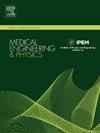MSRMMP: Multi-scale residual module and multi-layer pseudo-supervision for weakly supervised segmentation of histopathological images
IF 1.7
4区 医学
Q3 ENGINEERING, BIOMEDICAL
引用次数: 0
Abstract
Accurate semantic segmentation of histopathological images plays a crucial role in accurate cancer diagnosis. While fully supervised learning models have shown outstanding performance in this field, the annotation cost is extremely high. Weakly Supervised Semantic Segmentation (WSSS) reduces annotation costs due to the use of image-level labels. However, these WSSS models that rely on Class Activation Maps (CAM) focus only on the most salient parts of the image, which is challenging when dealing with semantic segmentation tasks involving multiple targets. We propose a two-stage weakly supervised segmentation framework (MSRMMP) to resolve the above problems, the generation of pseudo masks based on multi-scale residual networks (MSR-Net) and the semantic segmentation based on multi-layer pseudo-supervision. MSR-Net fully captures the local features of an image through multi-scale residual module (MSRM) and generates pseudo masks using image-level label. Additionally, we employ Transunet as the segmentation backbone, and uses multi-layer pseudo-supervision algorithms to solve the problem of pseudo-mask inaccuracy. Experiments performed on two publicly available histopathology image datasets show that our proposed method outperforms other state-of-the-art weakly supervised semantic segmentation methods. Additionally, it outperforms the fully-supervised model in mIoU and has a similar result in fwIoU when compared to fully-supervised models. Compared with manual labeling, our model can significantly save the labeling time from hours to minutes.
组织病理图像弱监督分割的多尺度残差模块和多层伪监督
组织病理图像的准确语义分割对肿瘤的准确诊断起着至关重要的作用。虽然全监督学习模型在该领域表现出色,但标注成本非常高。弱监督语义分割(WSSS)由于使用图像级标签而降低了标注成本。然而,这些依赖于类激活图(Class Activation Maps, CAM)的WSSS模型只关注图像中最显著的部分,这在处理涉及多个目标的语义分割任务时是具有挑战性的。为了解决上述问题,我们提出了一种两阶段弱监督分割框架(MSRMMP),即基于多尺度残差网络的伪掩码生成和基于多层伪监督的语义分割。MSR-Net通过多尺度残差模块(MSRM)充分捕捉图像的局部特征,并使用图像级标签生成伪掩码。此外,我们采用Transunet作为分割骨干,并使用多层伪监督算法来解决伪掩码不准确的问题。在两个公开可用的组织病理学图像数据集上进行的实验表明,我们提出的方法优于其他最先进的弱监督语义分割方法。此外,它在mIoU中优于完全监督模型,在fwIoU中与完全监督模型相比具有相似的结果。与手工贴标相比,我们的模型可以显著节省贴标时间,从几小时到几分钟。
本文章由计算机程序翻译,如有差异,请以英文原文为准。
求助全文
约1分钟内获得全文
求助全文
来源期刊

Medical Engineering & Physics
工程技术-工程:生物医学
CiteScore
4.30
自引率
4.50%
发文量
172
审稿时长
3.0 months
期刊介绍:
Medical Engineering & Physics provides a forum for the publication of the latest developments in biomedical engineering, and reflects the essential multidisciplinary nature of the subject. The journal publishes in-depth critical reviews, scientific papers and technical notes. Our focus encompasses the application of the basic principles of physics and engineering to the development of medical devices and technology, with the ultimate aim of producing improvements in the quality of health care.Topics covered include biomechanics, biomaterials, mechanobiology, rehabilitation engineering, biomedical signal processing and medical device development. Medical Engineering & Physics aims to keep both engineers and clinicians abreast of the latest applications of technology to health care.
 求助内容:
求助内容: 应助结果提醒方式:
应助结果提醒方式:


